Teampal Mhuire
_11-crop-u11558.jpg)
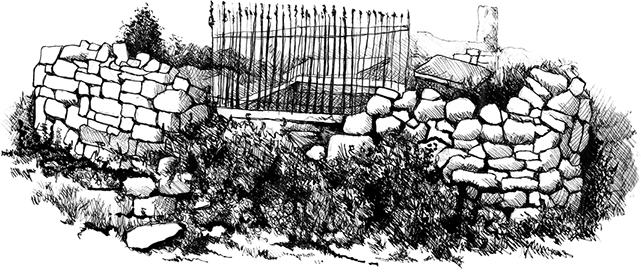
_19278x415.jpg) A hundred metres or so to the north-east in the cemetery of Rathfran is Teampal Mhuire-‘Temple-Mary,’ once a burial place and possibly a Dominican nunnery built on a Patrician Site. Unfortunately, there is not much to be seen today but the old low stone outlines of the foundations of this ancient church, and the remains of a well dedicated to St. Brendan, a name which still flourishes in the area. St. Dominick was also once venerated at Rathfran with an annual pilgrimage and fair on 22 August. This church was described in 1615 as being “in ruins”, so it is probably true to say that the decay began soon after the arrival of the Dominicans.
A hundred metres or so to the north-east in the cemetery of Rathfran is Teampal Mhuire-‘Temple-Mary,’ once a burial place and possibly a Dominican nunnery built on a Patrician Site. Unfortunately, there is not much to be seen today but the old low stone outlines of the foundations of this ancient church, and the remains of a well dedicated to St. Brendan, a name which still flourishes in the area. St. Dominick was also once venerated at Rathfran with an annual pilgrimage and fair on 22 August. This church was described in 1615 as being “in ruins”, so it is probably true to say that the decay began soon after the arrival of the Dominicans.
 Close by Rathfran is a tidal ford known as ‘Fearsad Tresi’-the Ferry of Treise, and it was here, where according to local tradition, people crossed at low tide, that Treise, the chieftainess daughter of Nadfraoch, a King of Munster and first wife of the great King Awley/Amhalgaidh, son of Fiacra-Rex Fiachrorum, was drowned. This “Fearsad” is also closely associated with the events of 1798, for it was here, on Sunday, 23 September, that scores of innocent civilians were driven into the waters and massacred.
Close by Rathfran is a tidal ford known as ‘Fearsad Tresi’-the Ferry of Treise, and it was here, where according to local tradition, people crossed at low tide, that Treise, the chieftainess daughter of Nadfraoch, a King of Munster and first wife of the great King Awley/Amhalgaidh, son of Fiacra-Rex Fiachrorum, was drowned. This “Fearsad” is also closely associated with the events of 1798, for it was here, on Sunday, 23 September, that scores of innocent civilians were driven into the waters and massacred.
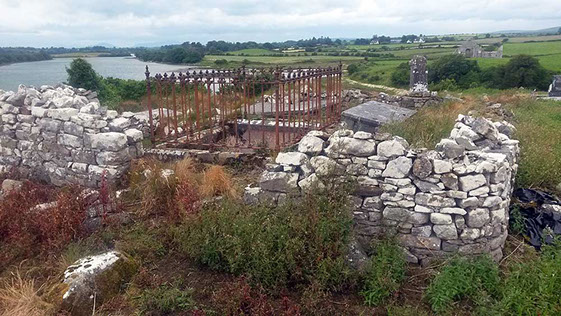 The Ordnance Survey Letters of Mayo, 1838 give the location of the Fearsad thus “Fearsad...lies just under the Abbey of Rafran. There are two round stones on each side of the Channel to show its position.” The word fearsad [farsad] is applied to a sand-bank formed near the mouth of a river, by the opposing currents of tide and stream, which at low water often formed a firm, and comparatively safe passage across. The term is now most commonly used in the West of Ireland where these farsets were once of considerable importance, as in many places they served the people instead of bridges. A sandbank of this kind across the mouth of the river Lagan was known as Bel-feirsde-‘the ford of the fearsad’-modern Belfast.
The Ordnance Survey Letters of Mayo, 1838 give the location of the Fearsad thus “Fearsad...lies just under the Abbey of Rafran. There are two round stones on each side of the Channel to show its position.” The word fearsad [farsad] is applied to a sand-bank formed near the mouth of a river, by the opposing currents of tide and stream, which at low water often formed a firm, and comparatively safe passage across. The term is now most commonly used in the West of Ireland where these farsets were once of considerable importance, as in many places they served the people instead of bridges. A sandbank of this kind across the mouth of the river Lagan was known as Bel-feirsde-‘the ford of the fearsad’-modern Belfast.
On the west side of the road at Carbad Mór is an accessible, though much ruined double-court tomb. At either end of the ruins are a cairn, all that now remains of two almost circular courts, each leading into its own separate gallery-the larger court measures about eight metres in diameter. It was once described as “Carbadmore court cairn, with a circular court at each end opening on a gallery grave.”
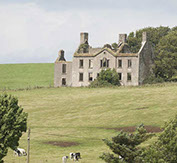
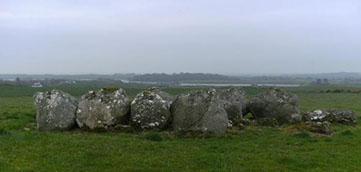 East of the same road, in Rathfranpark, are the remains of a large wedge/chamber-tomb composed of huge boulders averaging 1.8 metres high. At the east end, between two rows of double-walling, several large stones, taken from a nearby stone circle were dumped. About one hundred metres further on, in Rathfran south, another ruined wedge-tomb may also be viewed. On a commanding position to the rear of Summerhill House, a slightly elevated stone circle with a diameter of 21metres may be
East of the same road, in Rathfranpark, are the remains of a large wedge/chamber-tomb composed of huge boulders averaging 1.8 metres high. At the east end, between two rows of double-walling, several large stones, taken from a nearby stone circle were dumped. About one hundred metres further on, in Rathfran south, another ruined wedge-tomb may also be viewed. On a commanding position to the rear of Summerhill House, a slightly elevated stone circle with a diameter of 21metres may be 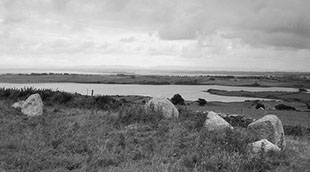 found, and located nearby in the adjoining field is a small mound. The nineteenth century author and antiquarian Cesar Otway expertly described the ancient status of the area when he wrote “I have never seen so many [monuments] clustered within a circuit of half a mile as here except at Carrowmore.”
found, and located nearby in the adjoining field is a small mound. The nineteenth century author and antiquarian Cesar Otway expertly described the ancient status of the area when he wrote “I have never seen so many [monuments] clustered within a circuit of half a mile as here except at Carrowmore.”
_15185x276.jpg)
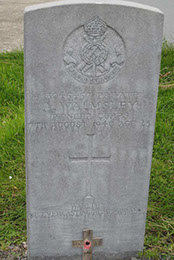 In the graveyard of Rathfran (formerly Templemurry/Temple Mary Graveyard) are located the graves of three young sailors, all victims of the naval conflict of World War 11. The three bodies were washed ashore at Cúl Tráigh as the ‘Back Strand’ at Kilcummin was once known, and interred here in Rathfran. Their tombstones read as follows:
In the graveyard of Rathfran (formerly Templemurry/Temple Mary Graveyard) are located the graves of three young sailors, all victims of the naval conflict of World War 11. The three bodies were washed ashore at Cúl Tráigh as the ‘Back Strand’ at Kilcummin was once known, and interred here in Rathfran. Their tombstones read as follows:
13045457 A. Walmsley, Pioneer Corps. 7th August 1940 Age 25.
MN (Merchant Navy) G.C. Butcher, Apprentice, M.V. Upwey Grange, 8th August 1940, Age 19. Dearly Beloved Twin Son of Charles and Jessie Butcher, Orpington, Kent.
MN (Merchant Navy) A Sailor of the 1939-1945 War Found 7th December 1940
View these photos in a gallery


_8.jpg)
_11.jpg)
_15.jpg)
_19.jpg)

_9.jpg)
_13.jpg)







_883x55.jpg)
_1183x55.jpg)
_15-crop-u12365.jpg)
_19-crop-u12374.jpg)

_983x55.jpg)
_13-crop-u12473.jpg)






